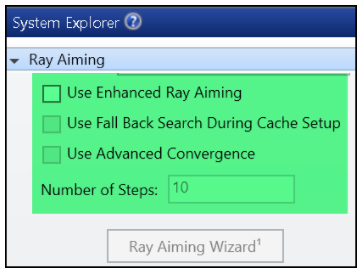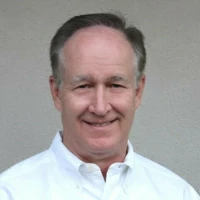Welcome
Welcome to the January edition of the Zemax Community update! This newsletter provides updates for you, the user, on items you might find interesting or helpful! In this article, we will call out forum posts you may have missed, new Knowledgebase articles, and will honor a Zemax user who has made a contribution to their peers! Check out each of these items below:
Is there something else you’d like to see? Let us know in the comments below!
Featured Community Posts
Did you know our technical teams are working every day to bring you new and exciting content? In addition to providing support, our team also makes guides, forum posts, webinars, and more! This month alone, we’ve posted all kinds of new items. Check them out below!
Knowledgebase Updates
- Where to find more help & information
@Allie Hide contentShow content
Whether you're new to OpticStudio, re-learning the software, or are a long-time user - knowing where to find resources will be sure to make you more successful, sooner. Within this article, we will outline the resources provided to you by Zemax. We will show how to access them, and in which situations they will be the most beneficial.
- Updated: Using Project Directories to organize OpticStudio files – Knowledgebase (zemax.com)
@Alissa Hide contentShow content
Introduced in OpticStudio and OpticsViewer 21.3, the Project Directory system enables easy packaging and storage of important Zemax files so that they can be easily accessed an manipulated on a project-by-project basis. Project Directories can help prevent overwriting data stored in common files accessed by multiple OpticStudio design files.

- How to model DMD (MEMS) in OpticStudio – Knowledgebase (zemax.com)
@Sandrine Auriol and@Michael.Humphreys Hide contentShow content
Digital Mirror Device (DMD) or Micro Electro Mechanical Systems (MEMS) consist of an array of small rectangular mirrors. Each mirror can have a different tilt. These devices can be used for many applications including spectroscopy (the mirrors can send light from different wavelengths at different positions) and DLP projection technology to project images from a monitor onto a large screen. OpticStudio can model them in sequential with a DLL or in non-sequential with the MEMS Object.

- Introduction to Enhanced Ray Aiming and Ray Aiming Wizard
@Michael Cheng Hide contentShow content
This article introduces two OpticStudio 22.1 new features, Enhanced Ray Aiming and Ray Aiming Wizard. Enhanced Ray Aiming provides a significantly improved algorithm which allows users greater speed and more stability in the design of systems with wider angle of view. Ray Aiming Wizard, on the other hand, is designed to help users determine the most suitable combination of Ray Aiming options for their system. The operating conditions for these tools will be discussed.

Zemax-er Spotlight: Jeff Wilde

Jeff has been involved in the world of optics for over thirty five years. Jeff is a valuable contributor to Zemax, having presented at Envision 2020. He can also be seen regularly on the Zemax Community - helping peers and students understand and use their software. To read more about Jeff, click below.
Hide contentShow content
Tell us about yourself
I've been in optics my entire career. In fact, as an undergraduate student I had the chance to work in a laser spectroscopy lab, exploring applications of fluorescence to forensics (for Prof. Roland Menzel, who pioneered laser fingerprint detection). That was over thirty-five years ago, but it provided a spark that encouraged me to further pursue optics and photonics in graduate school at Stanford University, and to then go on to co-found two companies based on optical technologies (one in optical storage and another in wavelength switching hardware for fiber networks). For the last fifteen years or so I have been running an optical design consulting business as well as serving in various capacities at Stanford (centered on researching and developing new optical technologies, along with helping teach a lens design class). It's been, and continues to be, a very interesting and intellectually stimulating journey.
What in the industry are you excited about?
The advent of low-cost CMOS sensors has certainly driven a renaissance in optical imaging. Obviously smart phone cameras with multi-element molded plastic aspheres have fundamentally impacted daily life. This trend continues with Lidar and AR/VR as well as with numerous biotech applications. For me, it's the rich diversity offered by optics and photonics that has kept my interest. From ray optics (and lens design), to wave optics, statistical optics, integrated optics, and quantum optics, there is absolutely no shortage of fascinating topics to explore. More recently, computational imaging has become a very interesting field that will no doubt provide much new opportunity for the future.
If you could offer one piece of advice to someone using OpticStudio, what would it be?
I would encourage new users of OpticStudio to not try and learn optics solely through the software. OpticStudio is an incredibly powerful tool, but it ideally requires the user to have some formal training in optics and lens design. Alternatively, one could pursue a self-guided approach in which the software is used in conjunction with some reference books. For example, Introduction to Lens Design with Practical Zemax Examples by J. M. Geary is a good starting point. There are certainly numerous other very useful reference books (such as Introduction to Lens Design by J. Sasian, and Introduction to Fourier Optics by J. W. Goodman; and for a comprehensive treatment the five-volume set of the Handbook of Optical Systems by H. Gross, et al. is quite good).
Are there any contributions you’ve made to Zemax in the past that others should know about?
Two relatively recent journal publications that feature use of OpticStudio: 1. J. P. Wilde, T. M. Baer, and L. Hesselink, "Modeling UV-C irradiation chambers for mask decontamination using Zemax OpticStudio," Appl. Opt. 59, 7596-7605 (2020). 2. J. P. Wilde and L. Hesselink, "Modeling of an X-ray grating-based imaging interferometer using ray tracing," Opt. Express 28, 24657-24681 (2020). I also gave an invited talk at the inaugural Envision conference (2017) summarizing work I did with the Zemax technical team on developing and testing of a more powerful and realistic version of fluorescence modeling that includes re-absorption of fluorescent rays. Lastly, I gave a second invited talk at the Envision 2020 conference presenting my work on UV decontamination of N95 masks (which included the published findings as well as additional important details related to methods for obtaining high-SNR irradiance data sets when using custom 3D detector surfaces). This presentation was offered as a Zemax webinar following the conference.
Have you contributed a Knowledgebase article to the Zemax Knowledgebase? If so, who will benefit the most from reading it?
Yes, I've written one Knowledgebase article describing a way of simulating spatial coherence effects, entitled: Simulation of Young's interference experiment via geometric ray tracing in OpticStudio. It's primary intended for users who might want to use NSC mode to calculate interference patterns when starting with a small, but otherwise incoherent, extended source. The article describes how to utilize Scattering with Importance Sampling as a way to make very efficient use of all rays, combined with programmatic control of the simulation in order to calculate the superposition of interference fringes formed from multiple uncorrelated point sources (that mimic a discrete version of an incoherent extended source).
What’s the most challenging problem you’ve addressed with the help of OpticStudio?
One of the trickiest problems I've addressed to date with OS is simulation of an X-ray grating-based imaging interferometer to provide results for three separate imaging modalities, namely: attenuation, differential phase contrast, and coherent scattering (or dark-field imaging). While the system layout was not particularly complicated, modeling its functionality required implementing numerous features programmatically via the ZOS-API in non-obvious ways. The resulting simulations ultimately agreed quite nicely with experimental results.



